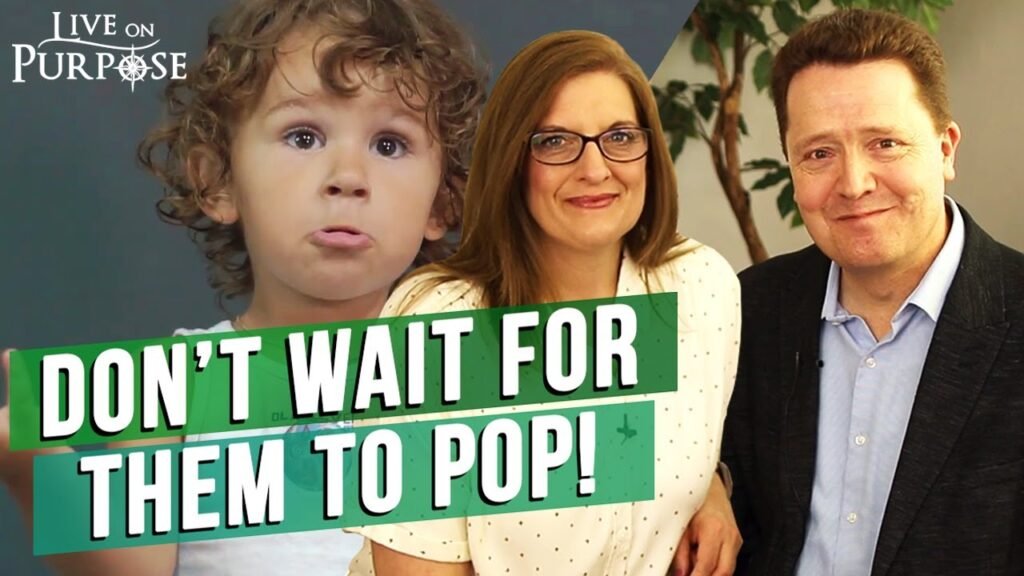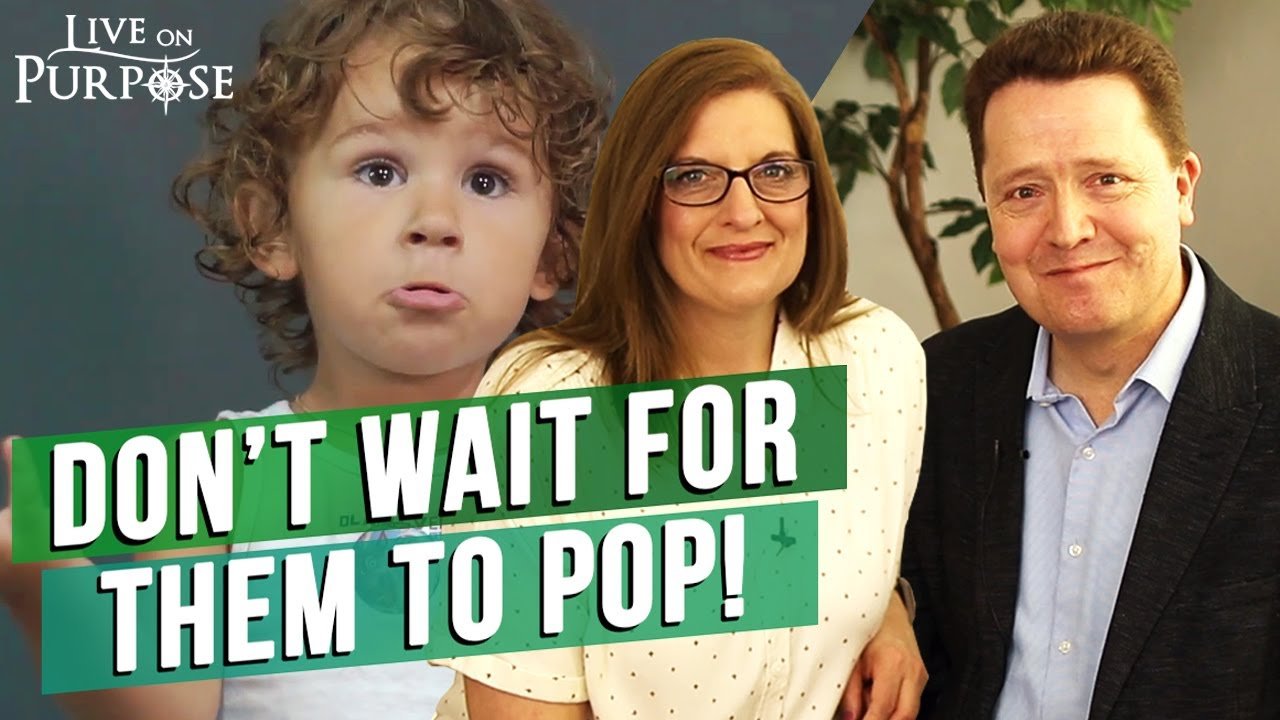In the video “How to Help Your Child Talk About Their Feelings” by Live On Purpose TV, the focus is on building a strong relationship with your child through open and honest discussions about their emotions. By exploring your own ability to talk about feelings, you can help your child feel more comfortable expressing their own. The video provides tips on how to facilitate these conversations, such as recognizing that you are never wrong about how you feel and expanding your child’s vocabulary of emotions beyond happy, mad, and sad.
The video also emphasizes the importance of accepting your child’s feelings without judgment and being aware of your own reactions when they do open up. It offers a helpful exercise for parents to do with their kids and discusses the difference between appropriate and inappropriate ways to express emotions. Ultimately, the goal is to help your child develop emotional awareness and regulation, leading to healthier communication and stronger connections.
Accepting and acknowledging feelings
Before you can help your child open up about their emotions, it’s important to start with yourself. Accepting and acknowledging your own feelings is the first step towards creating a safe and open space for your child to do the same. Remember, you’re never wrong about how you feel. Your feelings are valid and deserve to be acknowledged.
It’s natural to have apprehensions or fears about discussing emotions, but it’s crucial to overcome these barriers. Take a moment to check in with yourself and assess your comfort level with feelings. If you find that you struggle with talking about emotions, it might be beneficial to address this before trying to help your child. Remember, by accepting and acknowledging your own feelings, you set the foundation for your child to do the same.
Expanding your child’s vocabulary of emotions
When it comes to emotions, children often have a limited vocabulary. They may only be familiar with basic emotions like happiness, anger, and sadness. However, emotions are complex and nuanced, and it’s important to expand their emotional vocabulary to reflect this reality.
Introducing new words for emotions can help your child better express themselves and understand their own feelings. You can do this by sharing your own experiences and using new words to describe your emotions. For example, instead of just saying you’re angry, you can say you’re frustrated or disappointed. By modeling different emotional words, you can help your child develop a richer understanding of their own emotions.
Explaining the connection between thoughts and feelings
It’s important for children to understand the link between thoughts and feelings. Emotions are often a response to our thoughts and beliefs about a situation. By helping your child recognize this connection, they can gain insight into why they feel a certain way.
You can explain to your child that their thoughts influence their feelings. For example, if they have negative thoughts about a particular event, they may feel sad or anxious. By teaching them to identify their thoughts and challenge any negative or unhelpful beliefs, you can empower them to better navigate and regulate their emotions.

Creating a visual representation of feelings
Sometimes, children may find it challenging to express their emotions verbally. In such cases, creating a visual representation of their feelings can be helpful. This can be done through simple drawings or visual aids that represent different emotions.
Using this technique, you can guide your child through various scenarios and ask them to identify and draw how each emotion feels. This visual representation can enhance their understanding of different emotions and make it easier for them to communicate their feelings.
Importance of responding appropriately to your child’s feelings
How you respond to your child’s emotions is crucial in creating a safe and open space for them to express themselves. It’s essential to respond in a way that validates their feelings and lets them know that their emotions are valid and accepted.
Avoid belittling or dismissing their emotions, even if you don’t fully understand or agree with them. Instead, listen actively and attentively, offering reassurance and empathy. By responding appropriately, you show your child that their emotions matter and encourage them to continue sharing their feelings with you.
Teaching appropriate ways to express emotions
While it’s important to encourage your child to talk about their emotions, it’s equally essential to teach them appropriate ways to express and regulate these emotions. Emotions are a normal part of life, but how we express them can have a significant impact on ourselves and those around us.
Help your child understand that while it’s okay to feel anger or frustration, it’s not acceptable to act out these emotions in harmful or hurtful ways. Teach them alternative ways to express their emotions, such as through words, art, or physical activities. By providing them with healthy outlets for their emotions, you can help them develop emotionally intelligent and socially acceptable ways of expressing themselves.
Differentiating between emotions and behaviors
It’s crucial for children to understand the distinction between emotions and behaviors. Emotions are internal experiences that we feel, while behaviors are the actions we take based on those emotions. By helping your child differentiate between the two, you can effectively guide them towards appropriate ways of expressing their emotions.
Explain to your child that emotions are normal and natural, but it’s important to express them in ways that are respectful and considerate of others. Teach them that while they may feel angry, it’s not okay to hit or hurt someone. By establishing this understanding, you enable your child to navigate their emotions in a way that promotes positive communication and healthy relationships.
Helping children understand the distinction
Understanding the difference between emotions and behaviors can sometimes be challenging for children. As a parent, you can guide them in recognizing this distinction through open and honest conversations. Use real-life examples to illustrate the connection between emotions and behaviors, ensuring they grasp the concept.
Encourage your child to reflect on their own experiences and discuss how their emotions influenced their actions. By fostering this self-awareness, you help your child develop the skills necessary to navigate and express their emotions appropriately.
Joining a positive parenting community
Parenting can sometimes feel overwhelming, especially when it comes to discussing emotions with your child. Joining a positive parenting community can provide you with valuable support and resources to navigate this journey.
Connecting with other parents who are going through similar experiences can offer insights, advice, and reassurance. Online platforms such as parentingpowerup.com can serve as a hub for positive parenting resources, including articles, forums, and educational materials. By being part of a community, you’ll gain valuable tools and knowledge to strengthen your relationship with your child and help them talk about their feelings.
In conclusion, creating an open and accepting space for your child to talk about their feelings is crucial for their emotional well-being. By accepting and acknowledging your own feelings, expanding their emotional vocabulary, and teaching appropriate ways to express emotions, you empower your child to navigate their emotions effectively. Remember, your role as a parent is not to dismiss or belittle their emotions but to validate and guide them towards healthy emotional expression.

